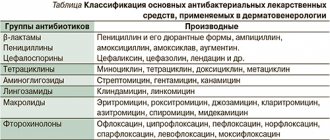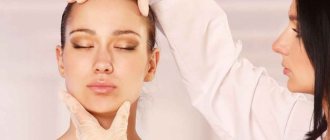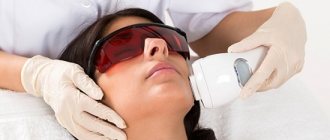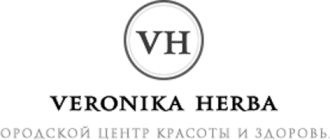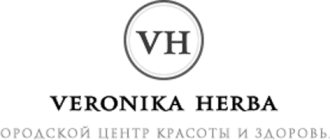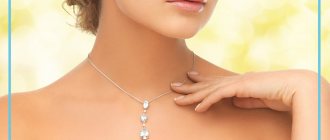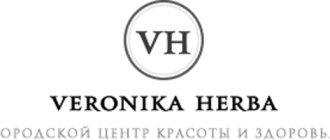Recovery process
Erbium laser is used in cosmetology to eliminate scars on the skin; reviews of the procedure report that rehabilitation lasts no more than two weeks, often the problem area is restored within three days.
There are no serious damage to the skin after the procedure. But there may be redness, swelling, and in rare cases, hematomas.
To speed up the healing process of the skin after laser therapy, cosmetologists advise using “Bepanten” ointment or “D-Panthenol”.
But if there are serious negative consequences, consult a doctor immediately.
What are acne scars and wrinkles
Wrinkles, as we know, inevitably appear with age. The skin becomes less elastic and stretches. The process of cell renewal slows down. Aggressive exposure to the sun on the epidermis layer (photoaging) accelerates the formation of wrinkles. The use of creams does not solve this problem. The same can be said about acne scars. Moisturizing and nourishing with cosmetics does not eliminate acne scars. They represent a violation of the relief of the skin, and this defect can only be eliminated with the help of laser resurfacing.
What is the difference between erbium laser resurfacing and CO2 laser rejuvenation?
CO2 laser rejuvenation is an alternative to the previously described option. This is a deeper and rougher effect on the skin, which has the main advantage of low cost. Carbon dioxide laser is cheaper than erbium laser.
Also, CO2 appeared much earlier, so cosmetologists more often offer treatment using this procedure. It is more difficult to find specialists in the erbium analogue.
But an erbium laser (Erbius, Fraxel, Toplaser, Photona or another) is safe.
CO2 laser resurfacing has a significant drawback in the form of a long rehabilitation process of 3-4 weeks or more.
Types of laser resurfacing
Laser resurfacing can be carried out on the entire skin, as well as in specific areas.
In traditional skin resurfacing, the laser affects the entire area of the treated area. The skin warms up, but the procedure can be traumatic: swelling and redness may occur. When used correctly, the procedure helps smooth out serious skin defects, remove acne and pimples.
With fractional resurfacing, a laser beam acts on the skin in a targeted manner, leaving areas untouched. Thanks to the diffuse effect, the procedure is less traumatic and does not require long-term rehabilitation.
Which laser rejuvenation method is better?
The doctor decides which laser rejuvenation method is right for you during a consultation. We must remember that everything is individual! There is no method that will suit everyone. Plus there are a number of nuances and limitations. In any case, CO2 and erbium lasers are two excellent options for rejuvenation.
CO2 laser is a deep impact with a long rehabilitation period. But the erbium laser acts more superficially. Therefore, therapy is carried out at a depth of only 1 micron, which allows the cosmetologist to vaporize a thin layer without exposing the main part of the skin to thermal damage. Because of this, the erbium laser is called “cold”.
Some cosmetologists are confident that the collagen damaged by the CO2 laser, which precisely contributes to the rejuvenating effect, shows results after the second procedure.
The main disadvantage of the CO2 laser is gross damage. When it comes to protecting your skin from serious blemishes during treatment, there is nothing better than resurfacing.
It has been proven that exposure to the skin with an erbium laser can reduce the period of epithelization, and complications practically do not arise.
It is important for clients of beauty clinics to remain beautiful, so CO2 clearly loses when it comes to rejuvenation. It cannot be as gentle as an erbium laser.
For more information on the difference between erbium and CO2 lasers, see the article Erbium laser or CO2 laser: which is better.
Removal of scars with laser
Scar tissue is the formation of connective tissue at the site of deep damage to the skin after mechanical (cuts, surgery), chemical, thermal (burns) trauma, or, for example, as a result of acne - post-acne scars.
Currently, laser exposure is the most effective method of treating scars on the face and body, recognized throughout the world.
Depending on the severity and depth, location and volume of damage, several types of scar tissue during the healing process of the wound surface :
- normotrophic - does not rise above the surface of the skin, has a pale pink color and can stretch;
- hypertrophic - rises above the skin, from a pale pink to lilac-bluish hue, fibrous connective tissue predominates. Sometimes such scars can cause impaired mobility of a body part;
- atrophic - looks like partially retracted skin, pale pink or slightly bluish in color, for example, acne scars or stretch marks;
- keloid - has a similar appearance to hypertrophic, but differs in its structure and is prone to recurrent course.
Laser scar removal techniques
Our clinic’s specialists have two high-tech laser systems for successful correction and removal of scars on the face and body:
- Palomar Star Lux 500 (Palomar Medical Technologies, Inc, USA) with Palomar 1540 and Palomar 2940 erbium tips.
- Fotona SP Dynamis (Fotona Medical Technologies, Slovenia) with exposure to erbium Fotona Er:Yag or neodymium Fotona Nd:Yag laser.
When correcting atrophic and normotrophic scar tissue, the following are used: either a non-ablative (without damaging the skin) Palomar Lux 1540 with a penetration depth of up to 1-3 mm, or a Fotona Nd:Yag with a depth of impact on tissue up to 8 mm .
- The technique of such laser exposure is called photothermolysis and consists of directed beams at destructive tissue. Minimizing thermal effects on the surface layers of the epidermis guarantees the elimination of thermal burns. The depth of penetration optimizes the number of procedures that the doctor selects individually in each case.
During laser exposure using the photothermolysis method, remodeling (restructuring) of damaged scar tissue occurs due to the activation of collagen and elastin synthesis processes. The skin takes on a healthy tone and a fresh look. The remodeling processes do not end with the completion of laser treatment procedures, but continue for another 2-3 months. At the site of targeted laser action, renewed tissues are synthesized.
The laser photothermolysis technique is most often used to treat normotrophic and atrophic scars, including the removal of scars and scars after acne, postpartum stretch marks. This effect does not require anesthesia, does not cause significant pain, and does not damage surrounding tissue at all.
The percentage of coagulated skin in the treatment area depends on the selected level of treatment and allows you to select the optimal treatment parameters in each individual case. After the laser scar correction procedure, the patient can lead a normal lifestyle (moderate swelling and redness lasts no more than 3 days).
- laser resurfacing technique is used to remove hypertrophic scars and scars. In this case, an ablative (with visible tissue removal) Palomar 2940 or a Fotona Er:Yag erbium laser is used . When performing a laser resurfacing procedure, fractional (i.e. fragmentary) evaporation of the surface layer of skin occurs along with scar tissue. As a result, active regenerative and reparative processes are launched in the affected area, new collagen fibers are synthesized, and healthy skin is formed at the site of the scar or scar.
The rehabilitation period after laser resurfacing lasts only 2-4 days (with deep resurfacing, the rehabilitation period is 7-8 days). In addition, fractional exposure minimizes the risk of complications. The procedure is performed after preliminary application of anesthesia.
Using laser skin resurfacing, you can “smooth out” hypertrophic scars and scars of any shape and any shade. To achieve a visible result, a course of 2-3 procedures to remove scars or scars with a laser is required with an interval of 2-4 months.
Correction of keloid scars using laser treatment is not carried out in our clinic.
Before and after results
- Prices for removal and resurfacing of scars and stretch marks using the Fotona SP Dynamis laser Er:Yag laser technology
- Laser scar resurfacing fractional Fotona Er:Yag/ per 1 cm2
700 rub
- Laser scar resurfacing fractional Fotona Er:Yag from 10 cm2/per 1 cm2
450 rub.
- Fractional treatment of connective tissue, treatment of stretch marks/per 1 cm2
700 rub
- Fractional treatment of connective tissue, treatment of stretch marks, from 10 cm2/per 1 cm2
450 rub.
- Therapeutic combined resurfacing Fotona Er:Yag (severe form of post-acne scars)
18000 rub.
- Neodymium Nd:Yag Laser Technologies
- Regional thermolifting (zone 10x14cm)
6500 rub.
- Combined technologies
- Removal of stretch marks - deep dermal thermolysis + fractional skin resurfacing (1 zone = 15x20 cm)
10000 rub
- Scars, scars, linear stretch marks, size 1-8 cm / per 1 cm of treatment
1400 rub.
700 rub
1400 rub.
- Striae 10x10 cm/per 1 zone
4500 rub.
450 rub.
700 rub
- Modification of atrophic scar tissue of one scar
200 rub
1500 rub.
Contraindications to laser facial rejuvenation
The main contraindications for facial rejuvenation with laser equipment:
- Lactation period;
- Pregnancy;
- Malignant tumors;
- Chronic inflammatory processes;
- Herpes in the active stage;
- Poor blood clotting;
- Epilepsy attacks;
- Violation of the integrity of the skin in the projection of work;
- Mental disorders;
- Tan acquired less than 14 days ago;
- Immunodeficiency syndrome.
You can find out how pressing a problem for a patient can interfere with the laser procedure at an initial appointment at a cosmetology center.
The specialist will tell you about the risks or immediately offer an alternative, which includes facial contouring.
What is fractional photothermolysis?
Fractionation is the division of a laser beam into many microbeams. That is, the laser affects the skin not as a continuous spot, but as a kind of grid. High-intensity laser microbeams penetrate to a depth of up to 1.5 mm, ensuring the highest efficiency of procedures. Thanks to the application of columns of micro-zones of damage to the skin, the mechanism of natural tissue restoration is launched with the formation of new skin. Thus, the principle of fractionation minimizes skin damage, leaving areas of undamaged tissue from which restoration occurs. During 1 procedure, 20-30% of the skin in the affected area is renewed. As a result, the structure of the skin and its appearance improves. At the same time, the rejuvenation effect obtained during treatment with the Sellas® 1550 laser manifests itself at all levels: the deep layers of the skin begin to actively produce collagen (wrinkles are smoothed out, facial contours become clearer), in the middle layers excess pigment is destroyed and the connective tissue of scars is absorbed, and the epidermis , thanks to Sellas® 1550 it smoothes out and acquires an even color. The treatment is safe and effective even on such sensitive areas of the skin as eyelids, cheeks, neck, décolleté, breasts, and hands. The effect of treatment accumulates from procedure to procedure and lasts for 1.5-2 years.
Features of the new generation True Fractional Sellas® 1550 fractional laser system:
- Laser resurfacing (elimination of fine wrinkles and smoothing out deep wrinkles, skin lifting, restoration of skin structure) on the face, neck, hands, any part of the body
- Treatment of pigmentation disorders (melasma, solar and senile lentigo)
- Elimination of enlarged pores
- Elimination of post-acne scars and other atrophic scars
- Correction of post-operative scars
- Treatment of stretch marks
Fractional resurfacing allows you to destroy the “old” skin in small “pillars”. These are the so-called “microthermolysis zones” (MTZ). Their thickness is comparable to a human hair. Around the MTZ zones there remain intact zones containing a large number of intact cells. Next, the process of active healing begins at the site of MTZ. Fragments of old skin are evacuated. The synthesis of new young cells is stimulated. After a course of treatment, the skin is renewed and becomes more attractive.
Expected results after a course of treatment with True Fractional Sellas® 1550 laser
- Treatment for the purpose of “rejuvenation”: on any area of the skin, including eyelids, neck, hands: skin color and texture improves – wrinkles and fine lines disappear – enlarged pores are reduced – facial contours are lifted
- Treatment of cosmetic defects after acne (post-acne): –– skin color is evened out –– “scars” are smoothed out –– pores are reduced in size
- Treatment of stretch marks (striae): – skin texture is evened out
- Treatment of scars after surgery, burns, injuries: –– scars become less noticeable
- Treatment of age spots: –– skin color is restored
Advantages and disadvantages
Erbium laser in cosmetology (reviews from doctors prove this fact) acts very carefully.
Its advantages:
- impact only on the selected area. The laser diameter is 2 microns, which allows it not to affect adjacent healthy tissues;
- shallow penetration of 5 microns contributes to superficial renewal, but the launch of a person’s own regenerative properties;
- almost no contraindications;
- easy tolerability. Only some particularly sensitive patients are given local anesthesia;
- the effect is on the upper tissues, which do not have nerve endings. Therefore, you can work with thin skin, including the area around the eyes.
The procedure has only one drawback. Like any intervention in the stable functioning of the body, the laser can cause complications. In 1% of 100 it is impossible to predict them.
Skin care after the procedure
Directly on the day of the procedure, you can wash and shower. The day after the procedure, you can use decorative cosmetics. It is recommended to refrain from visiting the sauna and swimming pool. In the first days, it is not recommended to sleep on your stomach or wear compression garments (if the procedure is performed on the body). Moisturizing the skin with cream should be done at least 2-3 times a day. During the course of therapy and for 3 months after, it is necessary to avoid direct exposure to sunlight, use sunscreen with SPF of at least 30. During prolonged exposure to the sun, photoprotective agents should be applied every 2 hours. Do not use scrubs, peels or other exfoliating products during treatment, or products containing glycolic, salicylic acid or retinol (stop using them 2-3 weeks before the procedure and refrain from using them for 2 weeks after the procedure).
The difference between the True Fractional Sellas® 1550 laser and Fraxel:
- Sellas® 1550 procedures are virtually painless
- There is no need to apply marker paint, therefore, the preparation time for the procedure is reduced
- Due to deeper penetration of radiation into the skin, the efficiency of the Sellas® 1550 laser is higher, so fewer treatments are required
- Sellas® 1550 is the only fractional laser that operates in two modes: “Scanner” and “Stamp”
- High laser precision minimizes the risk of complications
- A variety of operating modes ensures an individual approach
Description of the procedure
The number of procedures on the Sellas® 1550 device depends on the problems the patient is addressing, on the skin type, and on the patient’s subjective feelings. Usually these are 3-4 procedures performed at intervals of 3-4 weeks. Before the procedure, local anesthetic cream can be applied to Sellas® 1550 to completely eliminate even mild discomfort during the procedure. After this, the rejuvenation session itself is carried out using Sellas® 1550. The patient puts on dark glasses, the doctor places the nozzle of the device on the skin, and the patient feels a slight tingling sensation. The procedure lasts 15-50 minutes. After the procedure, the treatment area is cooled to reduce redness and tingling sensations, and a soothing, moisturizing cream is applied.


